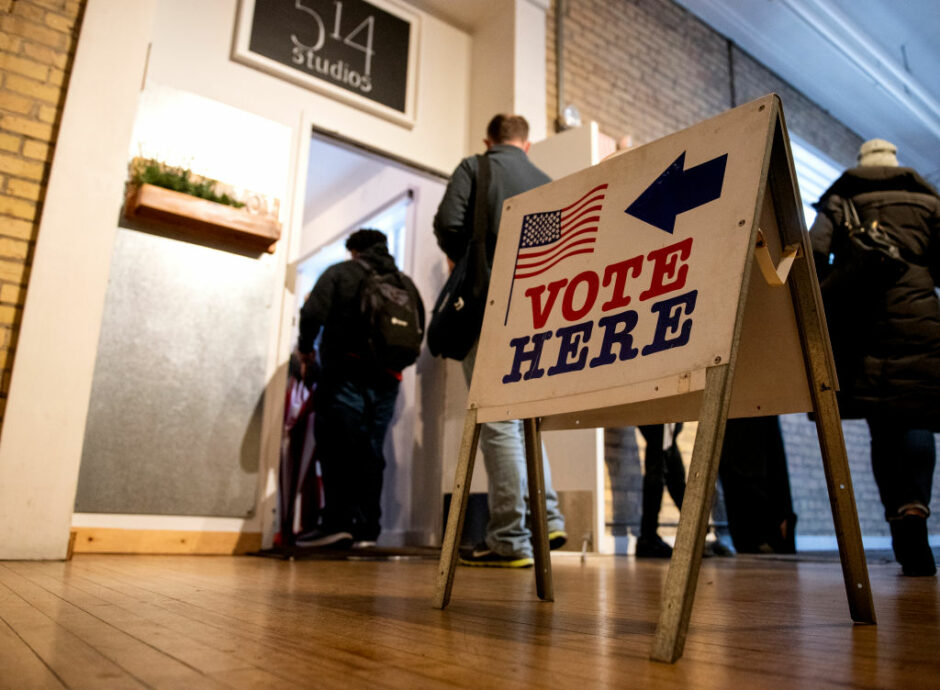The indispensably public nature of voting and not professional narcissism is the prism through which conservatives should view voting reform.
The Puzzle of Voter Participation
One of the most frequent subjects of debate within the American political system is, how easy (or difficult) should it be for someone to vote? On one hand, it seems that making it easier to vote will increase voter participation, which is generally a good thing in a functioning democracy. On the other hand, some people believe that if voting is too easy then the probability of voter fraud will increase.
However, at the end of the day, it seems that whether someone chooses to vote often has very little to do with how easy voting actually is. Instead, whether someone elects to vote appears to be far more dependent on whether someone believes their vote has any chance of influencing an election. And when districts are extremely non-competitive—with, say, more than 75% of votes going to a single party on nearly every issue—it becomes much more difficult to argue that the benefits of voting (such as having a say in your country and community) truly outweigh the costs (time, money, opportunity costs, etc.).
It is generally important for citizens of a democracy to feel connected to their democracy and to have the motivation to participate in it—a thing most often achieved through voting. When people feel connected to their communities, they feel more obligated to care for their communities, to care for their fellow community members, and to take actions that will make their world a better place.
A bit dramatic, perhaps, but there is no denying that regardless of population density, we are all part of a community. For better or for worse. And considering that we are also part of a political system with democratic features, it is important to think about how the state of our democracy affects the state of our communal well-being, and vice versa.
Keeping that in mind, what is the current state of our democracy? Do people actually care enough to get involved?
The “Occasional Voter”
There has been a considerable amount of variation regarding voter turnout in presidential elections since 1932, when reliable public data becomes widely available. The election with the highest voter turnout during that period was in 1960, when John F. Kennedy defeated Richard Nixon in a widely covered and anticipated race. During that election, 62.8% of the voting-age population (VAP) decided to vote. The election with the second highest voter turnout was 2020, when Joe Biden defeated Donald Trump in a showdown between two of the most historically disliked candidates in history. That year, 62% of the VAP decided to vote.
On the other end of the spectrum, the presidential election since 1932 with the lowest voter turnout was 1996, when incumbent Bill Clinton defeated Bob Dole. That year, just 49% of the VAP voted, representing the only time in the last century when less than half of American adults chose to vote in a presidential election. There was also low turnout in 1988, which was a fairly close matchup between George H. W. Bush and Michael Dukakis. That year, just 50.3% of the VAP participated.
In other words, at least during presidential elections, there is about 38% of the population that never votes, about 49% of the population that always votes, and about 13% of the population that may or may not vote, depending on a variety of factors.
In 2020, about 66% of eligible American adults voted in the presidential election. According to the US Census, about 52% of eligible adults voted in 2022, which—while the decrease is normal during a non-presidential election—shows that adult interest in American democracy is relatively limited.
What causes people to vote? What causes people to not vote? There are many different possible reasons, of course. If there is a particular issue that people really care about on the ballot or if there is a particularly popular candidate running for a given position, the likelihood of voting will naturally increase. Similarly, people are also likely to be motivated if there is a particular candidate they don’t like—something that has become increasingly common in today’s highly polarized political climate.
There are other structural factors, however, that will also significantly impact the likelihood of a person voting. Perhaps most notably, people’s decisions will be heavily influenced by whether they believe their vote could make any sort of difference.
Most people don’t believe—or at least shouldn’t believe—that their single, personal vote is going to make a difference. There are very few elections that come down to a single vote, though it does happen on extremely rare occasions. In 2017, for example, the Virginia House of Delegates had a vote come down to a literal tie (11,608 votes for each candidate) and the winner was randomly drawn “from a bowl” by State Board of Elections Chairman James Alcorn. This drawing, which was won by the Republican candidate David Yancey, proved deeply consequential because it gave the Republicans a 51–49 majority in the Virginia House that year.
It is clear that non-competitive districting has led to many problems, including depressed voter turnout and decreased accountability.
And there have been plenty of other close elections as well, even if they didn’t come down to a single vote. For example, in the 2000 US presidential election, the entire state of Florida came down to just 537 votes, or 0.009% of the electorate, which was just enough for George W. Bush to win the presidency. While Florida got the most attention due to the state’s large population, the Supreme Court case, and other notable controversies, it was not even the closest state in that election: Al Gore won New Mexico by just 366 votes.
In any case, one thing is clear: some elections will be very close and some elections will be not so close. In 2022, for example, 14 congressional districts had someone running completely unopposed. An additional dozen or so districts also had someone running against a third-party candidate, which created an easy path to victory in every instance.
These are US Congressional Districts—a body of just 435 people with some of the most important decision-making responsibilities in the world—that were completely non-competitive. Is this good for democracy? Is this good for the country?
The answer is almost certainly no. For people to feel meaningfully invested in the democratic process, they need to be able to be heard by key decision-makers in their communities and to be able to make changes in a meaningful way.
Non-Competitive Districts
In the United States, there is a constant debate about how easy it ought to be for people to vote, with some advocating for relatively tighter controls (such as requiring a state-issued ID) and others advocating for looser controls (such as allowing mail-in ballots, same-day registration, etc.).
These minor structural changes, however, have relatively little impact on whether somebody decides to vote. Instead, other factors play a much more dominant role. For example, the true cost of voting—which might include needing to take off work, paying for temporary childcare, foregoing an opportunity, etc.—appears to be far more likely to affect someone’s voting activity. This is one reason states with the lowest incomes, both red and blue, have lower levels of voter participation than states with higher incomes.
Across the board, states and districts that are considered competitive are likely to have much higher rates of voter participation. Wisconsin, for example, was one of the most competitive states in the 2020 election and also had one of the highest rates of voter participation. New Hampshire was also very competitive and had high rates of participation. Oklahoma, Arkansas, Tennessee, and West Virginia, on the other hand, were the four states with the lowest levels of participation and were also among the least competitive states.
This connection between competitiveness and voter participation becomes even more obvious at the district level. In 2022, there were 74 races that ended up being within 10%, including 11 races that ended with margins less than 1% (Colorado’s 3rd District, won by Lauren Boebert, was the most competitive). When compared to other districts, many of which had margins over 75%, these districts had notably higher voter participation rates—likely because these voters, accurately, assumed their votes could actually make a difference.
The Future of Districting and Voting
A quick look at the current House of Representatives map reveals a few important trends. Perhaps most notably, it is clear that districts, on average, are becoming less competitive. Since the House capped its seats at 435 in 1929, the 74 districts within a 10% margin was among the lowest it had ever been. There are likely several explanations behind this, including gerrymandering from both sides, the increased age of the American population (older people tend to protect incumbents), natural sorting (such as Democrats moving to large cities and Republicans moving away from them), and many others.
It is unreasonable to expect every district to be competitive. But decreased competition in the marketplace of ideas, in general, is bad for democracy and bad for the American people. When people see that their vote will have very little impact, they will be less likely to even consider voting. In the end, this protects incumbents, decreases government accountability, and potentially alienates voters.
This is bad for everyone, regardless of political affiliation. Why would a Republican living in California’s 12th District (which voted 89.3% for Biden) feel any hope in participating? Why would a Democrat living in Alabama’s 4th District (which voted 80.2% for Trump) feel any hope? In fact, why would anyone—even those who agree with the local majority—living in these non-competitive districts feel that voting is something that is truly worth their time?
Of course, it is easy to point out the problem. The best solution is not always obvious. Nevertheless, it is clear that non-competitive districting has led to many problems, including depressed voter turnout and decreased accountability. For the sake of the country and the American people, it would benefit both sides to consider a better path forward. Possible solutions include changing districting practices, shifting to a proportionate representation system (which would likely require a constitutional change), increasing the number of representatives, and instituting more non-partisan districting measures. For the sake of the country and the American people, it would benefit both sides to consider a better path forward.



